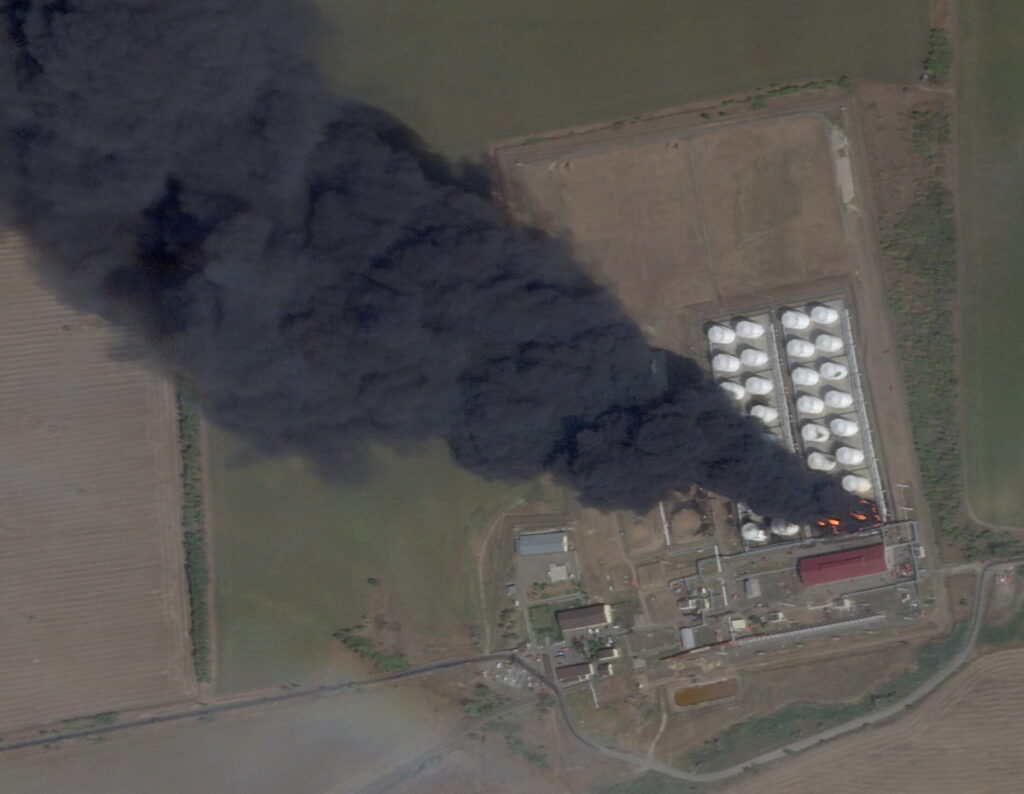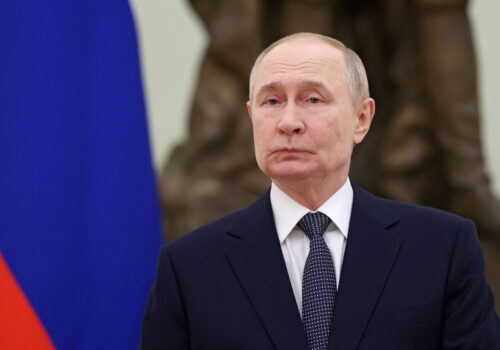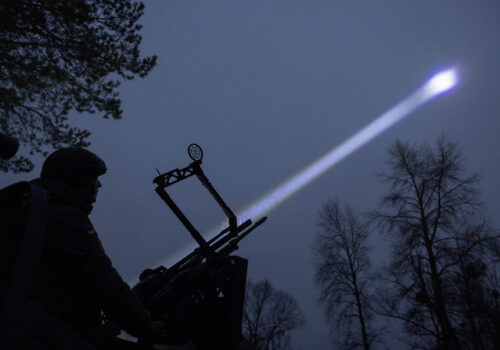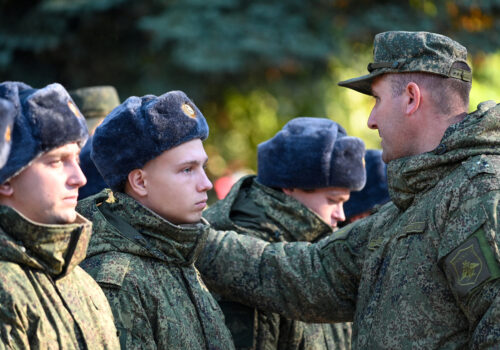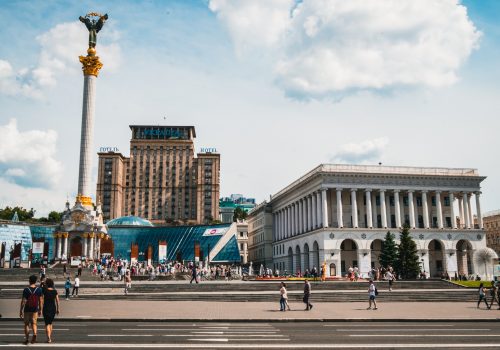As reports of cracks in Russia’s wartime economy continue to mount, Ukrainian President Volodymyr Zelenskyy is now predicting that the Kremlin will face an unprecedented budget deficit of around $100 billion in 2026. The Ukrainian leader is far from alone in forecasting more economic pain in the pipeline for Russian dictator Vladimir Putin. US President Donald Trump has recent stated that the Russian economy is “going to collapse” unless Putin ends the invasion of Ukraine.
This is not the first time since the start of the full-scale invasion that Russia has faced major budgetary strains. In 2022, the Kremlin’s urgent need to cover rising military expenditures forced it to resort to improvised measures such as windfall taxes on the energy and banking sectors. A surge in commodity prices then helped cover Russia’s ballooning defense budget, while mobilization and additional recruitment in 2023 and 2024 were financed mainly through municipal and regional budgets, along with minor tax hikes.
For much of the past three and a half years, international attention has focused on Russia’s apparent success in overcoming the impact of sanctions, along with the Kremlin’s ability to maintain modest GDP growth while transitioning to wartime conditions. However, the economic strain of the ongoing invasion is now becoming increasingly hard to disguise.
Russia’s deepening economic difficulties have been exacerbated by a highly effective Ukrainian campaign of long-range air strikes targeting the oil and gas industry that fuels Putin’s war machine. Since August 2025, Ukraine has launched a large-scale air offensive against oil refineries, gas processing plants, fuel depots, pipelines, logistics hubs, and export terminals across the Russian Federation. This has contributed to a sharp drop in Russian energy export revenues and led to spikes in fuel prices for domestic consumers. In recent months, fuel shortages have been reported in regions throughout Russia, with car owners forced to queue for hours in search of limited supplies.
The current fuel crisis in Russia is unlikely to be resolved soon. In a recent assessment, the Paris-based International Energy Agency stated that the impact from Ukrainian drone strikes is expected to suppress refinery processing rates for Russia’s economically crucial oil industry until at least mid-2026. Ukrainian strikes are also continuing to gain pace, with Kyiv in the process of developing a new generation of domestically produced missiles that should enable a further escalation in the bombing campaign.
Stay updated
As the world watches the Russian invasion of Ukraine unfold, UkraineAlert delivers the best Atlantic Council expert insight and analysis on Ukraine twice a week directly to your inbox.
To cover the growing gaps in the Russian budget and continue funding the war, the Kremlin plans to hike the country’s VAT rate from 20 to 22 percent. Tax increases are also expected to impact entrepreneurs, as the threshold for Russia’s simplified system with lower rates is set to be reduced fourfold. Critics have characterized this strategy as redirecting money away from ordinary Russian citizens and private businesses in order to finance the invasion of Ukraine.
Russia’s deteriorating economic situation places the Kremlin in a difficult position. On the one hand, a combination of sustained Western support for Ukraine and funding issues in Moscow mean that the Russian military could soon face increasing difficulties on the battlefield. On the other hand, the longer the fighting drags on, the more Russia’s economy is likely to suffer. Meanwhile, further sanctions measures and Ukrainian strikes on Russia’s energy industry are creating new pressure points that risk fueling domestic discontent inside Russia.
With relatively little movement along the military front lines in Ukraine over the past two years, the economic front of the war may ultimately prove decisive. “Putin will only stop this war when he thinks he can’t win, and for him to come to that conclusion, there needs to be more pressure on the Russian economy and more help for the Ukrainians,” commented Polish Foreign Minister Radosław Sikorski in September. “The war will likely end the way World War I ended. One side or another will run out of resources to carry on.”
Eurasia Center events

The objective in Western capitals must now be to make sure Russia runs out of resources before Ukraine. This should not be beyond the realms of possibility, given the vastly superior resources of Ukraine’s allies.
Russia’s current goal is to reduce its dependence on oil and gas. The planned Russian budget for 2026 is based on a lower oil price and aims to rely more on domestic taxes instead. Over time, this approach could make Russian state finances more resilient by cutting the share of oil and gas revenues from the current level of around 40 percent to about half that figure. But if Western countries tighten sanctions at the right moment, this plan could backfire, triggering runaway inflation and a further slowdown in Russian economic activity.
There are currently encouraging signs of Western readiness to increasingly target Putin’s war economy. Trump’s efforts to impose tariffs on countries that buy Russian oil have already made some nervous about trading with Moscow. The EU and UK have also stepped up sanctions, including blacklisting more ships from Russia’s shadow fleet. These measures are having an impact. For example, China’s Qingdao Port recently introduced technical restrictions on tankers that will effectively ban shadow fleet vessels, a move that underscores growing caution toward doing business with the Kremlin.
Ukraine’s deep strikes have exposed Putin’s Achilles heel and have helped demonstrate that the Russian economy is far more fragile than many in Moscow would like us to believe. Kyiv’s Western partners should now exploit their economic leverage over Russia in order to increase the pressure on Putin and convince the Kremlin that continuing the war could lead to economic ruin.
Vladyslav Davydov is an advisor to Ukraine’s First Deputy Minister for Development of Communities and Territories.
Further reading
The views expressed in UkraineAlert are solely those of the authors and do not necessarily reflect the views of the Atlantic Council, its staff, or its supporters.

The Eurasia Center’s mission is to enhance transatlantic cooperation in promoting stability, democratic values, and prosperity in Eurasia, from Eastern Europe and Turkey in the West to the Caucasus, Russia, and Central Asia in the East.
Follow us on social media
and support our work
Image: A satellite image shows smoke and fire rising from an oil depot, amid the ongoing conflict between Russia and Ukraine, at Astakhov in the Kamensky district, Rostov Region, Russia, August 28, 2024. 2024 Planet Labs Inc./Handout via REUTERS
